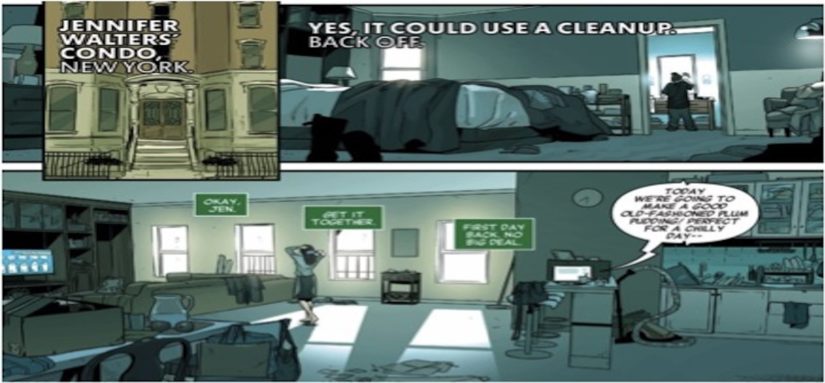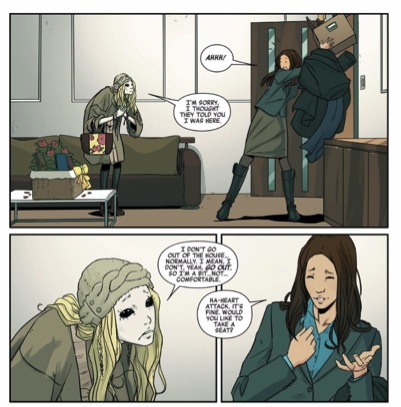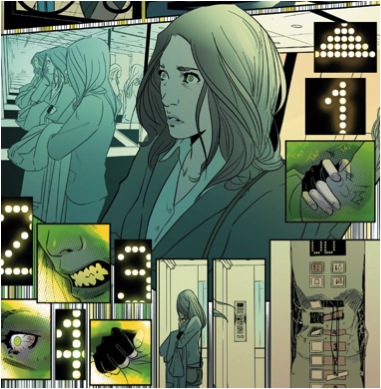All right, we’re kicking off Hulk month for Blastoff Comics – and rightfully so. Not to put any disrespect on Hulk’s name, I think the last time the general public has been THIS excited about the character was… well, definitely not in my lifetime. And I remember when a two little rashes of Hulk mania spread when Ang Lee’s Hulk and then The Incredible Hulk hit theaters… but come on. Hulk blasting out in the middle of that Thor: Ragnarok trailer is next level. I admit, I’m partial to the Thor films and this is probably not a popular take… but I think that movie is going to make everyone want to be big and green. For me, anyway, it’s got me excited to look back at a variety of Hulk comics and see what I’ve been missing. I read the title here and there – I dipped into Waid’s run, and definitely want to try the Jason Aaron stuff after seeing him crush it month in and month out on Thor – but I’ve never steadily picked up the title. I’m going to dip back further into the history of the title, of course, because that’s what we do here – but let’s start with what’s happening now.
The current series, simply titled Hulk, stars Jennifer Walters – formerly starring in the She-Hulk book, which I enjoyed. I was interested to see what she would do as the star of this new title, especially with this creative team. It’s written by indie superstar Mariko Tamaki, writer of the Eisner and Printz (!) Honor (!)-winning This One Summer, so that right there makes me think we’re in for something special before I even peel the cover back. The artist is Nico Leon, the color artist is Matt Milla, and the letterer is VC’s Cory Petit. I’ve read the first issue, Deconstructed Part One, which spins out of Marvel’s Civil War II event. I went in with high expectations, so I didn’t know if it would live up to the hype… but you know what?
It exceeded that hype.
Hulk #1 does everything right. It makes us care about Jennifer Walters as a person before getting into any of the super heroics, taking the time to build character rather than doling out action sequences every few pages like I see a lot of writers do. That type of thing feels like someone hiding a pill in a treat to give to a dog. It might taste good at first, but that dog is going to know you tricked them in the end. Tamaki doesn’t have to pull any narrative tricks because she’s spinning a powerful narrative with an engaging character that is intriguing in that she’s both mysterious and relatable. We see Jennifer getting ready, pushing herself to get back out in the world and go to work in her job at a new law firm. We see her dealing with the awkwardness of remerging back into the workforce as a superhero and a professional, with the fact that her co-workers don’t really know how to react to her. It feels real and raw in the same way that Matt Fraction’s writing on Hawkeye felt, even though the execution here is totally different.
When we do get into the Marvel Universe of it all, it’s very understated, played for intrigue and humor rather than big thrills. Ms. Brewn, a hunched woman, pale with black eyes that shine like a beetle’s shell, is her first client. Brewn needs help avoiding eviction, and it’s very clear that there’s something about her that isn’t being revealed to Jennifer… but Jennifer takes that with a grain of salt, because, as she expected, the lobby is filled with costumed heroes and other oddities looking for her legal advice or representation. That double-page spread is a terrific moment of levity in a book that does get pretty serious when we see the effects of the PTSD Jennifer suffers from after the events of Civil War II.
And let’s talk about that really quickly. Hulk #1 walks a tightrope in that it references said trauma a bunch, but it also never really elaborates on it, which I felt was a powerful choice. We tend to love editor’s notes in comics, which can be helpful but also can – in my opinion – hinder a story from standing alone. Instead of referring readers back to Civil War II (“Want to know why Jennifer’s in distress! Go read these other comics!”), Hulk #1 takes the more interesting and novelistic route of incorporating the backstory into the narrative as something we discover in this story as we read more. I hate to keep comparing Hulk #1 to other comics, because it really does so much RIGHT that it seems kind of pointless to harp on other comics doing things in a way that doesn’t work as well, but in an industry where sometimes narrative shortcuts are expected just because of the nature of a shared universe, Tamaki’s writing shows immense restraint.
On the artwork side of things, I dig it. Nico Leon has an indie flair with a hint of manga-inspiration. It reminds me a little of Fabian Lelay’s stellar work on Jade Street Protection Services, which is an indie standout from 2016 that I highly recommend both for great art and snappy writing – but I digress. Leon’s stuff is good throughout, but the really humorous moments – Brewn surprising Jennifer, the double page spread of the full lobby – stand out. Matt Milla’s colors are solid, taking Leon’s dramatic scenes to the next level. The page where Jennifer rides the elevator, resisting the urge to hulk out after being harassed outside of her apartment, is one hell of a sequence. The lettering also works amazingly with that, using the elevator’s rising numbers to show Jennifer’s mounting rage.
What a debut. I went into this still mostly eager to find out what the hell is up with Hulk in Thor: Ragnarok, and honestly? Now, I think I’m more excited to buy the rest of this series.







Comments are closed.